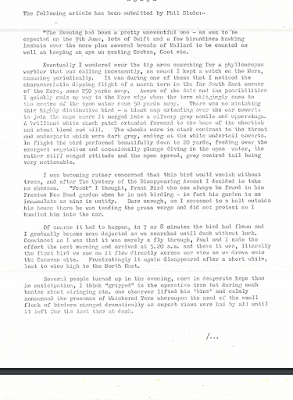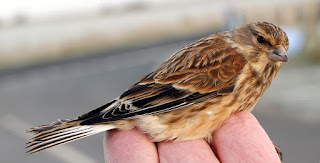With little local news, here’s a story for birders who like to hone their counting skills with massed waders; or flocks of finches perhaps?
After good autumn counts of Bramblings on migration through the UK there were hopes that the better than average numbers might herald a “Brambling Winter”, a winter when Bramblings become relatively common.
It wasn't to be as the counts fizzled out and sightings of Bramblings broke few if any records, at least in the UK. My own autumn and winter count troubled a single handful of fingers.
It wasn't to be as the counts fizzled out and sightings of Bramblings broke few if any records, at least in the UK. My own autumn and winter count troubled a single handful of fingers.
Brambling
Another Bird Blog featured the Brambling phenomenon in November 2018, but now there’s a follow-up to the story.
Recent counts in Slovakia suggest that as is often the case, and despite the hopes of UK birders, many Bramblings have remained in Northern and Eastern Europe where as normal they exploited crops of beech and hornbeam.
Cut to the TV News of recent weeks where heavy snowfall in Europe north of the Alps brought huge snow drifts, deadly avalanches and a degree of chaos to everyday life.
Large falls of snow covered much of the Bramblings’ food supplies with the result that they fled south beyond the Alps and into Slovenia in search of new food supplies. During this time Slovenia remained relatively snow-free as newly arrived Bramblings homed in on the Zasavje area. It was here that other Bramblings had already found good feeding amongst carpets of beechmast following a heavy seed crop during a productive summer.
Counts in recent days and weeks by Tomaž Mihelič and the other Slovene ornithologists of the country’s DOPPS - BirdLife Slovenia (Društvo za opazovanje in proučevanje ptic Slovenije) realised a count of between 2 to 5 million Bramblings in beech woods along the River Sava, a tributary of the Danube.
Bramblings, Slovenia (© Tomaž Mihelič)
Bramblings, Slovenia (© Tomaž Mihelič)
The counts showed a minimum of 2 million but probably as many as 5 million Bramblings, all contained in an area of about 100 square kms, a number representing a sizeable chunk of the whole European population. Every night the Bramblings packed into a stand of trees covering just 5 hectares (a circle about 250 metres in diameter). The exact site of the roost is not revealed so as to prevent disturbance, but it has drawn crowds of locals to watch each evening.
Stop press. With fresh snowfall around, latest counts suggest up to a staggering 10 million Bramblings.
Brambling
Looks like we in the UK will have to postpone our Brambling Winter to another year.
Linking today to Anni's Birding Blog and Eileen's Saturday Blog.
Linking today to Anni's Birding Blog and Eileen's Saturday Blog.


















































.jpg)












